Kingdom Animalia Clade Dinosauria Suborder †Ornithopoda Scientific name Lurdusaurus Rank Genus | Phylum Chordata Order †Ornithischia Clade †Styracosterna Higher classification Iguanodontidae | |
 | ||
Similar Dinosaur, Equijubus, Kangnasaurus, Mantellisaurus, Kryptops | ||
Lurdusaurus ('heavy lizard') is a genus of large ornithopod dinosaur that lived in the Aptian stage of the Early Cretaceous, sometime between 121 and 112 million years ago.
Contents
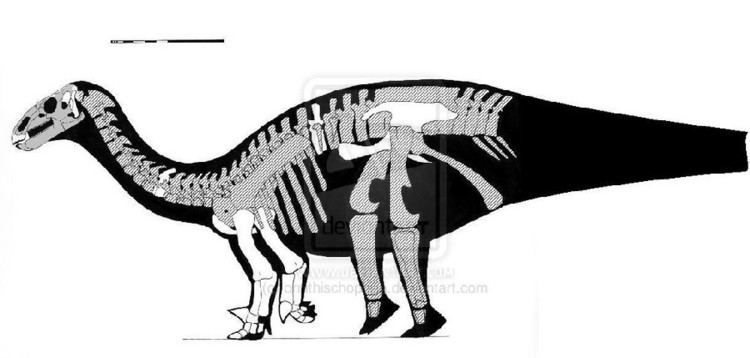
Etymology
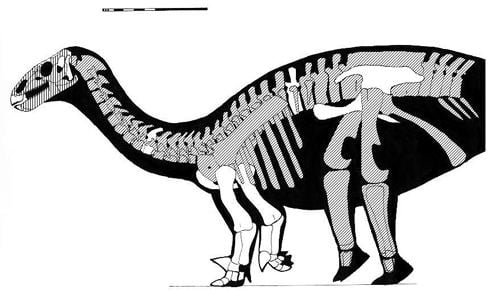
The generic name is derived from the Latin lurdus, "heavy" while the specific name of the type species, arenatus means "sandy", being a reference to the Tenere desert.
Discovery
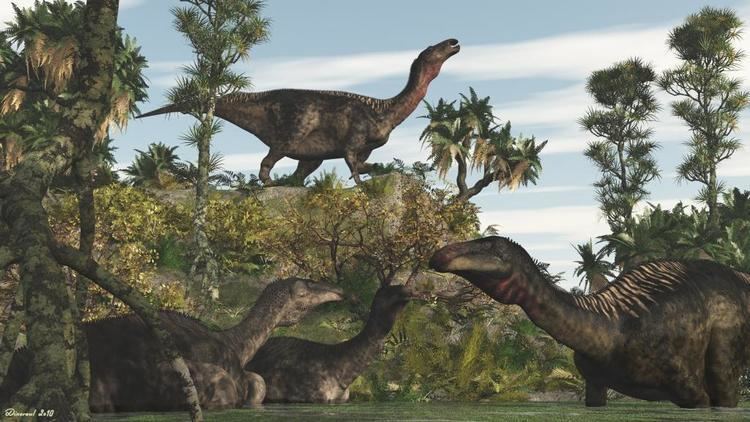
In 1965 Philippe Taquet discovered the remains of an ornithopod in rock layers of the Elrhaz Formation, in the Tenere desert of Niger, it consists of a partial skeleton with a fragmentary skull belonging to single individual which was given the catalogue number GDF 1700, the remains sat undescribed until 1988 when paleontologist Souad Chabli coined the name "Gravisaurus tenerensis" in her unpublished dissertation on the animal, however since the name was never published it is invalid, the remains were later briefly described and formally given the name Lurdusaurus arenatus by Taquet and Dale Russell in 1999, a name with similar etymology to "Gravisaurus tenerensis".
Description
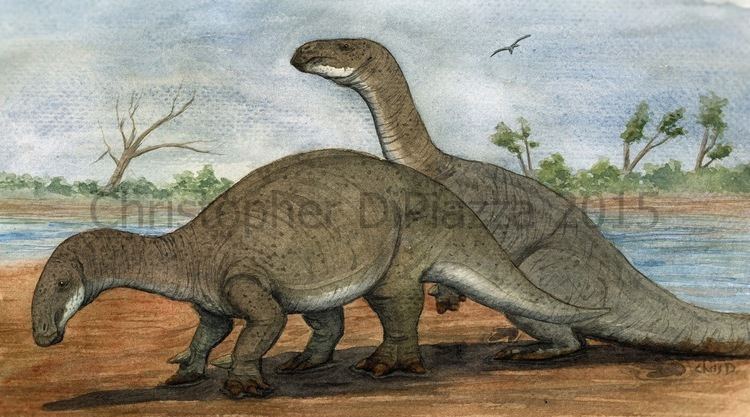
Based on the known specimen, Lurdusaurus arenatus had an unusually heavy built compared to other iguanodonts. Their forelimbs were proportionally short and powerfully constructed as were their hands which bore an enlarged thumb claw, their hindlimbs as well were massive and proportionally short, specially the lower leg, the foot was unusually constructed in that the foot bones (metatarsals) lacked solid contact with each other suggesting the presence of a fleshy pad that supported most of the weight. Their necks were relatively longer than in their relatives due to their neck vertebra being both more numerous and comparatively elongated. The type specimen would have been about 2 m (6.6 ft) tall at the hips and it was estimated to have approached 9 m (30 ft) in length while weighing 5.5 t (6.1 short tons) based on the circumference of its limb bones, lower weight and length estimates have been estimated, however. Due to their unusual body plan, the describers Taquet and Russell suggested that they would have looked superficially like an ankylosaur.
Lifestyle
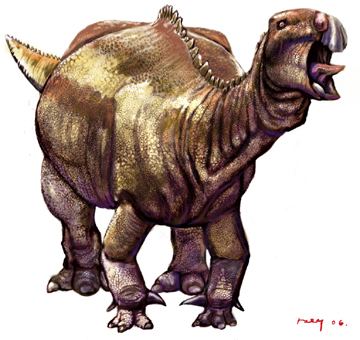
Paleontologist Tom Holtz has suggested that, based on their overall build, Lurdusaurus arenatus may have led an aquatic or semi-aquatic lifestyle, similar to a hippopotamus.
Habitat

The fossils of Lurdusaurus arenatus were found in the Elrhaz Formation, dating from the late Aptian to the early Albian of the Early Cretaceous period, approximately 112 million years ago. The stratigraphy of the formation and its aquatic fauna suggest that it was an inland fluvial environment, entirely freshwater in nature with a humid tropical climate. The named dinosaur fauna of the region apart from Lurdusaurus consisted in Ouranosaurus, the sauropod Nigersaurus , the spinosaurid Suchomimus, the carcharodontosaurid Eocarcharia and the abelisaurid Kryptops. The waters moreover were inhabited by the holostean fish Lepidotus, the coelacanth Mawsonia as well as the giant crocodile relative, Sarcosuchus.
